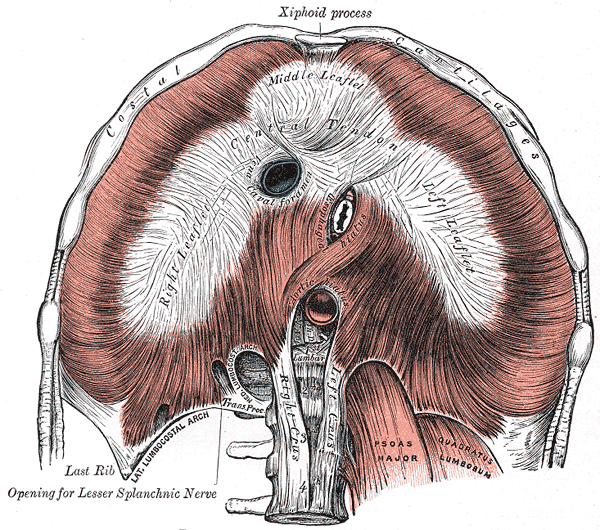Diaphragmatic versus Clavicular Breathing
aka Belly vs. Chest Breathing
By Michael P. Mansfield AAS, LMT, CNMT
In today’s chaotic world, most do not pay attention to how they are breathing. Chest or shallow breathing effectively cuts off the upper from the lower body and creates a physical imbalance in the body and a chemical imbalance in the blood and brain. This imbalance creates what we term as stress. Chronic stress has become business as usual and being hurried, rushed, or too busy are symptoms of stress.
The American Heritage Dictionary provides the following definition(s) for stress:
6a. A mentally or emotionally disruptive or upsetting condition occurring in response to adverse external influences and capable of affecting physical health, usually characterized by increased heart rate, increased respiration, a rise in blood pressure, muscular tension, irritability, and depression. b. A stimulus or circumstance causing such a condition. 7. A state of extreme difficulty, pressure, or strain.
Stress encourages the “fight or flight” response in the body. The nervous system reacts by releasing a number of hormones very rapidly. One of these hormones, adrenaline, has several effects on the body, to include an increase in respiration and heart rate.
People who chest breathe tend to hold in their stomach, make little use of the diaphragm, and breathe using the muscles of the upper chest, neck, and shoulders. When taking a deep breath, the chest breather visibly lifts the entire chest up away from the diaphragm, therefore creating more space in the thoracic cavity, rather than allowing the diaphragm to pull the air in.
This type of breathing becomes automatic, and the body adjusts volume and rate as it does in diaphragmatic breathing. Chest breathing encourages the muscles in the neck, chest, and shoulder area to become tight and weak. This means that the lungs are given less room to expand or contract and that the body must work harder. As breath volume is lowered, respiration must be sped up in order for the body to maintain balance. From this we can infer that chest breathing can create stress and vice versa.
When at rest, the correct way to breathe is with relaxed shoulders, upper chest, and stomach muscles, allowing the diaphragm and lower rib muscles to carry on the automatic breathing process. When you breathe in this way, your body continually adjusts the volume and breathing rate as needed to maintain balance. The breathing pattern to practice is as follows:
Sitting or laying comfortably (legs uncrossed), placing your hands on your stomach. Begin by taking a deep breath through the nose, expanding abdominal area, and making your hands on your stomach rise. Breathe out through the mouth, completely emptying the lungs. Repeat until you are comfortable with belly breathing. Do not hyperventilate.
Continue this breathing at your own pace until it becomes natural to you. DO NOT HYPERVENTILATE! Symptoms of hyperventilation include light-headiness, tingling in the lips, face, hands, and scalp.
By practicing diaphragmatic breathing on a regular basis, overall stress will be reduced dramatically, your well-being will be accentuated, and you will feel more grounded and centered during life’s most adverse situations. Be well!

